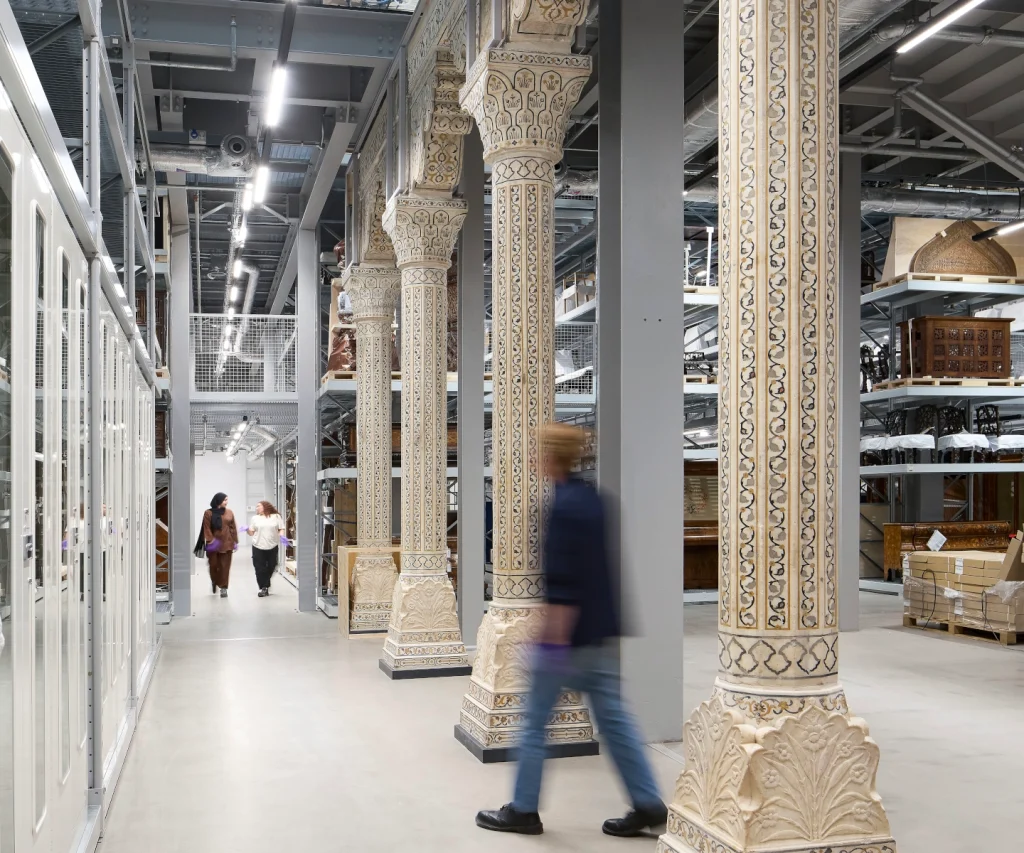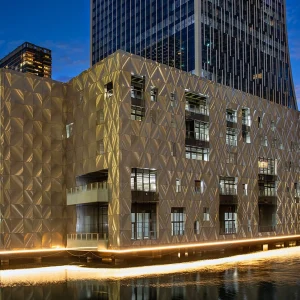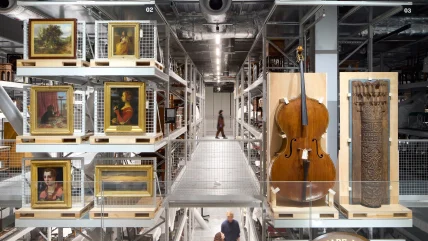
PROJECT INFO
V&A EAST STOREHOUSE
Client V&A Museum
Architecture Diller, Scofidio + Renfro with Austin-Smith: Lord
Engineering, structure services and lighting: Arup
Principal design advisers ORSA
Interior shelving system design IDK
E5 Bakehouse Café design Thing Studio
AV design Hoare Lee
Cost consultant Gardiner & Theobald
Project management Colliers
EDUCATION, EDUCATION, education: such could be (and probably has been) the mantra of the team behind the V&A East Storehouse, given the degree to which this new hybrid – part museum, part archive – facilitates curiosity, knowledge and public engagement. Is this the new statement building for the late 2020s – one that looks like a bland shed from the outside but inside is an Aladdin’s cave of creative inspiration and all of it accessible to anyone who wishes to drop in and explore? Let’s hope so. It is also, to its carbon-friendly credit, a retrofit, an interior reinvention of a 16,000m2 building that housed the world’s media at the 2012 Olympics, on the edge of the Olympic Park in Stratford.
Although greeted by simple, plate glass entrance doors and sleek, functional, Douglas-fir joinery in the lobby and café (the antithesis of the V&A Kensington’s opulent entrance halls), the experience is far from dull. Moving through the glass airlock doors that protect the 250,000 objects, 1,000 archive items and 350,000 books, you have a choice of either a lift or staircase to ascend to the 20m-high Collections Hall, which is jaw-dropping in its scale and impact. All around you – and underneath – are four floors of V&A treasures. Even the ground floor assets are visible from this entrance hall’s steel floorplate through a large, glass section in the centre. Below it you can see the 17th-century Agra Colonnade, a remarkable relic from the Mughal fort at Agra, in Uttar Pradesh.
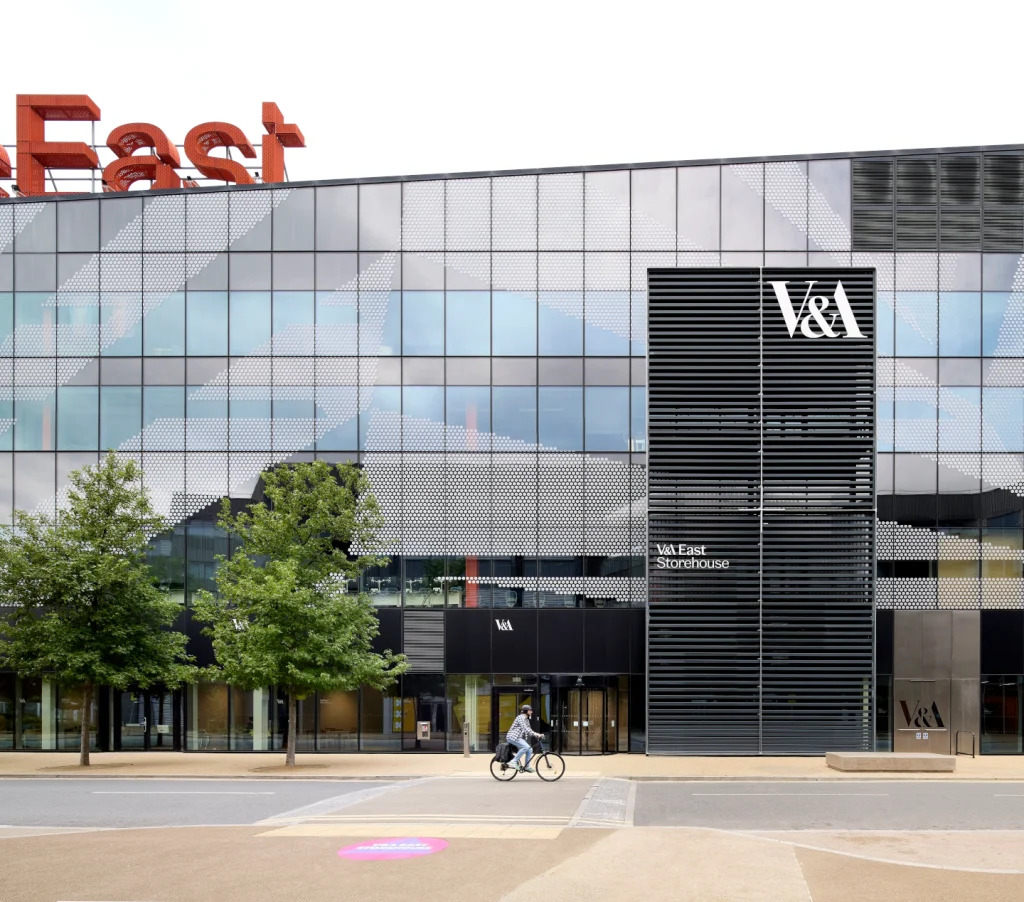
Visible on the grid-like shelving, and stretching away from you on every level (thanks to a display system designed by young London practice IDK) are such an eclectic pick ’n’ mix of treasures: here an exterior wall slab from the Robin Hood Gardens estate, there a gilt framed 17th-century masterpiece, a shrouded Balenciaga ballgown or tapestry from the V&A’s outstanding textile collection. There is even a reconstructed mosaic ceiling from Toledo’s 15th-century Torrejos Palace (the rest of it lost), complete with structural supports. It’s all about revealing the inner workings of the world of art and design, of conservation and collecting, and the inner life of this fascinating museum: conservators can be viewed restoring items in their laboratories; paintings, prints and photographs are visible, racked neatly in their sterile storerooms.
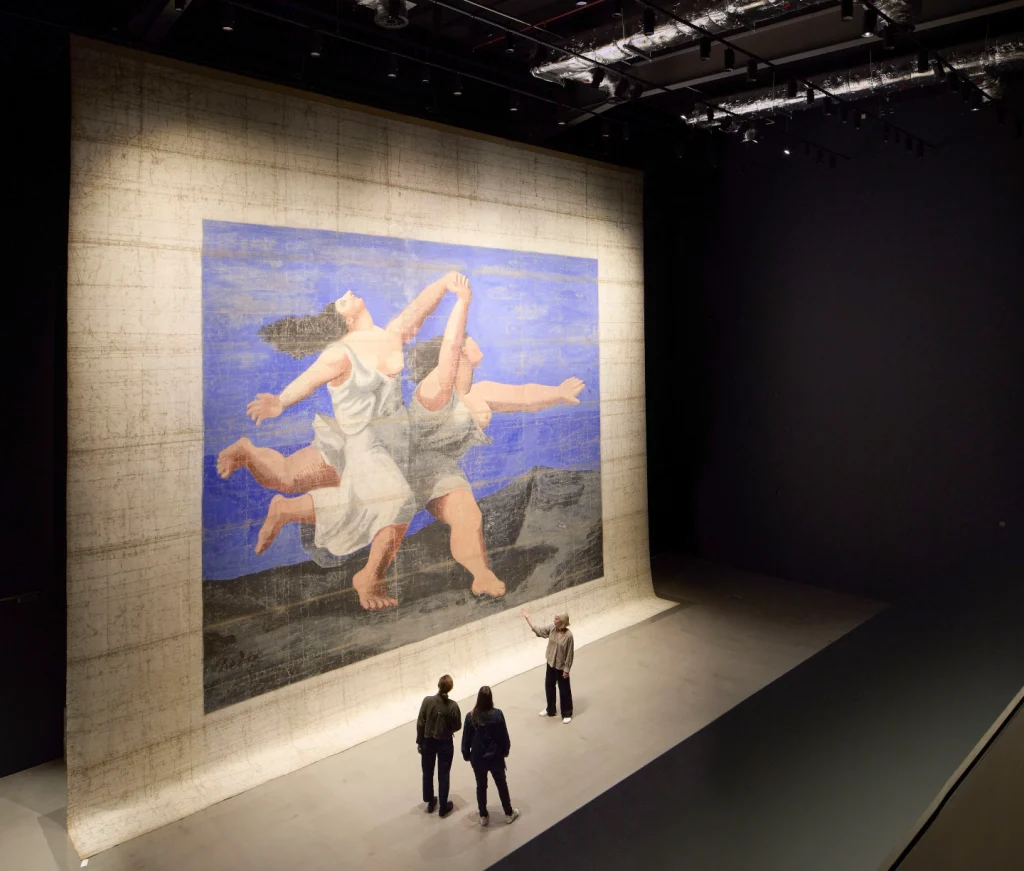
Liz Diller, founding partner of the architects responsible, Diller, Scofidio + Renfro (DS+R), who was present at the press opening, says the inspiration behind its designs was the sense of mystery and curiosity that she felt in visiting the V&A’s previous archive, at Blythe House, in Kensington – a Victorian warehouse that was no longer fit for purpose. With priceless objects all mixed according to their environmental needs, and mostly shrouded, she liked that ‘back-of-house’ experience, and the spirit of free-range exploration. The architects decided the ‘wow factor’ should come from your arrival in that central hall. ‘It is meant to be cinematic,’ says Diller, ‘unfolding slowly. You are burrowing through a tunnel, ascending a stair and entering through the floor, arriving in the centre.’
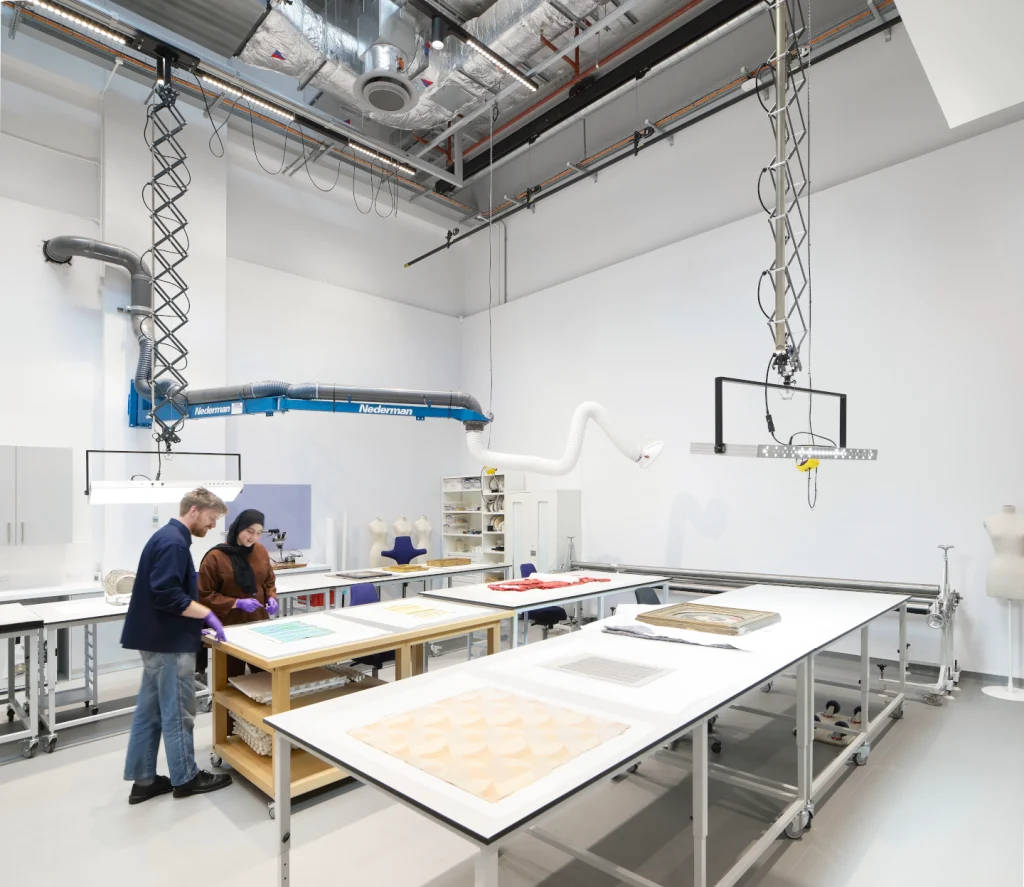
This was one of the factors that won this New York-based practice the design competition. That, and the inspiration to subvert the usual hierarchies of a museum building – usually only publicly accessible around its exterior layers. The Storehouse does the opposite, says Diller: ‘It’s conceived in three concentric rings between public and private. The most public parts are in the centre. The middle ring is semi-private (visitors can explore under their own steam or by arrangement) and the outer edge is the most private.’
Given the building’s windowless exterior, it made sense to place the most delicate objects that require deep storage around the building’s perimeter, along with research and conservation spaces.
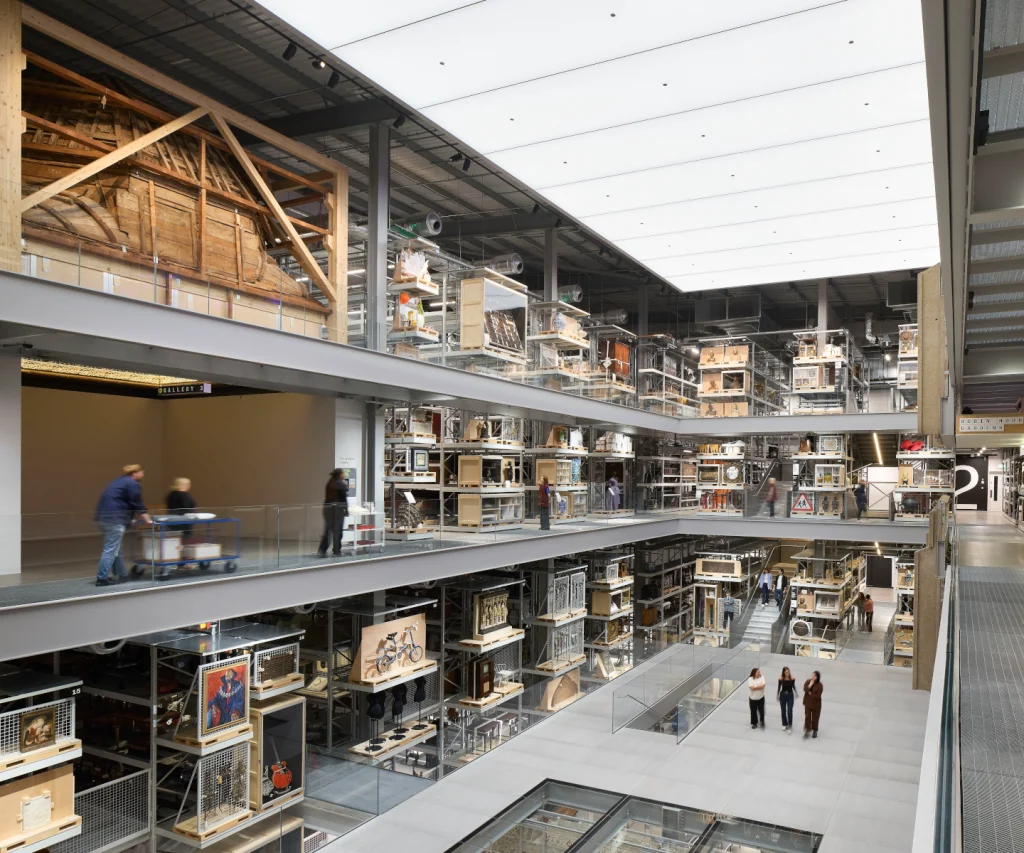
What is also clever about DS+R’s retrofit is how much drama they have managed to pack in to a building with the typology of a distribution warehouse. One of the most exciting encounters was in a double-height room that displayed the full 10m-high Ballet Russes stage backdrop that was inspired by a Picasso drawing – it was such an accurate interpretation that the great artist signed it. Looking down into one of the conservation studios from the floor above also has an otherworldly quality – its surfaces immaculate, in this sterile atmosphere, it was like observing surgery. A nearby screen showed you close-ups of what the conservators were up to.
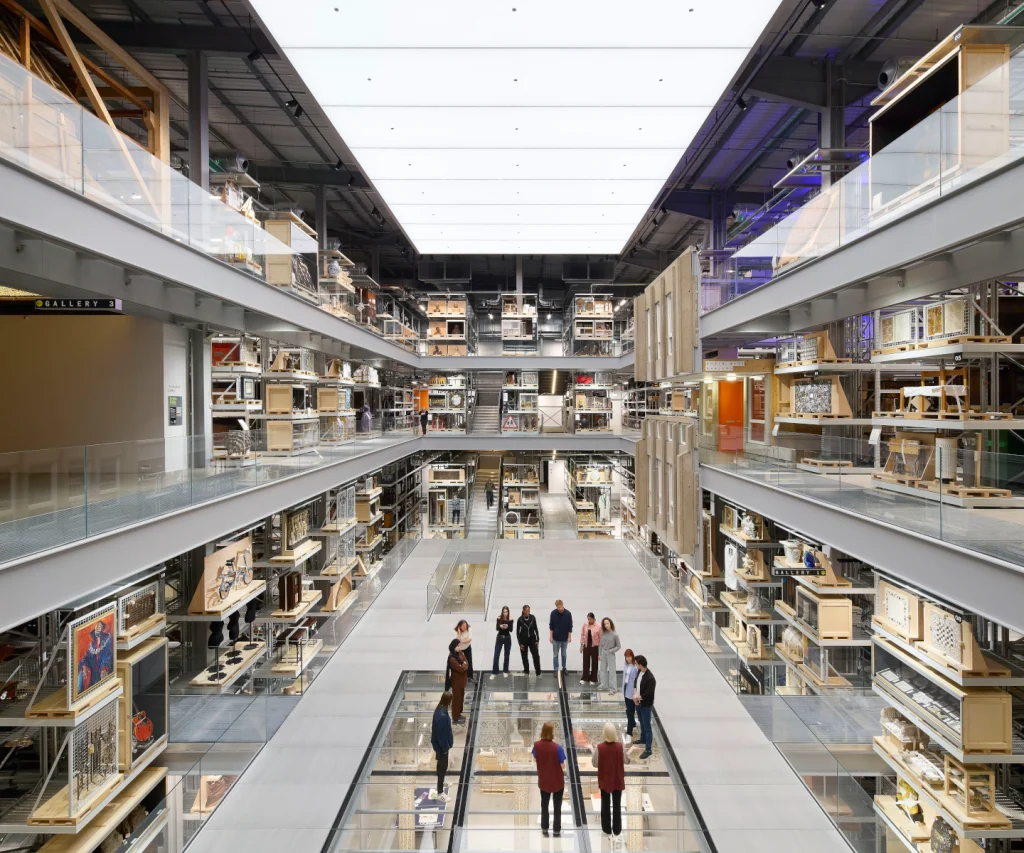
On the press day, the excitement was palpable: it felt like a radically new museum experience. It’s not the first visitable archive – MVRDV conjured a mirrorball experience for Rotterdam’s Boijman’s van Beuningen museum archive, which opened last year. But that is designed along more traditional ‘look but don’t touch’ lines, with layers of protection between the visitor and the artefact. Here, you are literally an arm’s length away from an antique, carved sphinx. None of the objects out on the display grid are behind glass. It’s an exercise in trust, perhaps. As is the ‘order an object’ experience, where any visitor can order up to five items for their own personal, up close, investigation in the study centre (with two weeks’ notice). Some of the most requested items include Adam Ant’s Prince Charming costume, as well as haute couture items from Christian Dior, Balenciaga and Alexander McQueen.
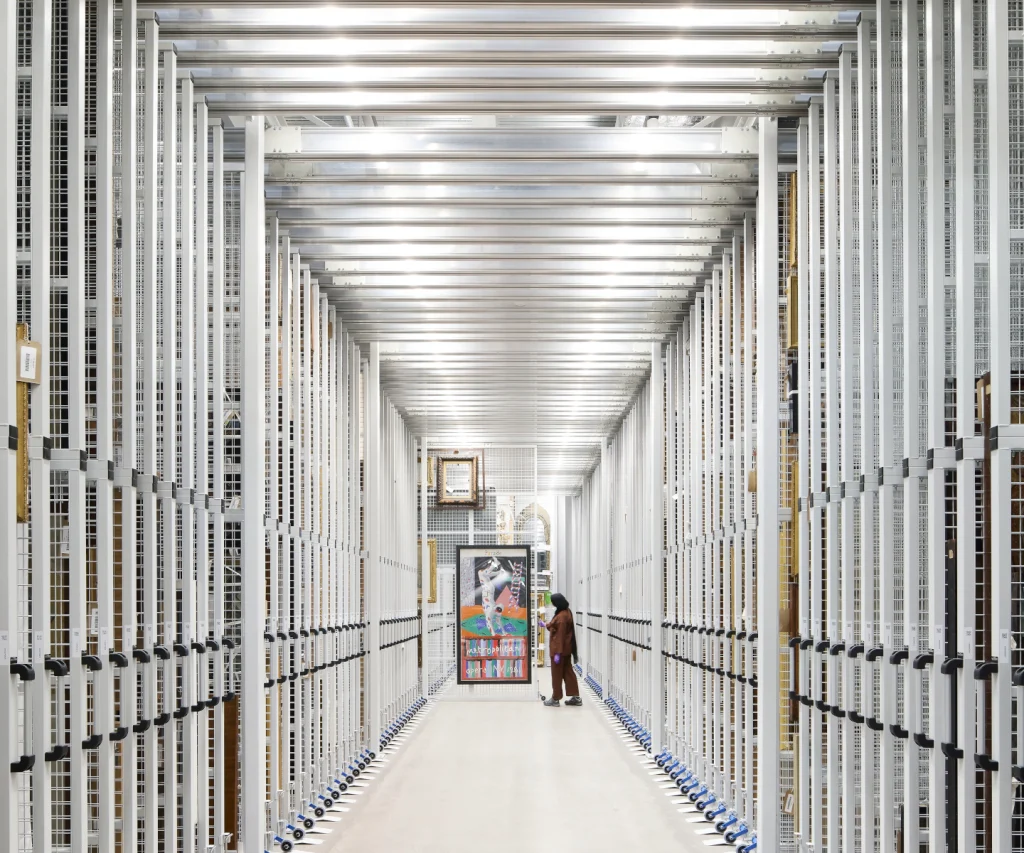
The Storehouse has also had a radically different gestation from any typical museum outlet, according to Tim Reeve, the V&A’s deputy director and CEO. Seeing the opportunity to engage with the one million people in the four Olympic boroughs who, as he says, ‘don’t visit the V&A in Kensington’, the museum organised workshops with more than 30,000 local people over the past five years, including 100 local schools and colleges. The topics for discussion included access and the articulation of important stories of colonisation and appropriation – such as how the Agra Colonnade came to be there. These issues and conversations are shared on captions, videos and by QR code. Reeve calls it ‘a genuine co-production… thousands of people who call east London home have welcomed us here and helped shape and design almost every aspect of the experience, to provide meaningful, democratised access.’ He also hopes that the sizeable local demographic of 16 to 30-yearolds, who are undoubtedly receiving little creative education via their state schools, will have their eyes opened to the many creative and technical roles on offer at such a museum.
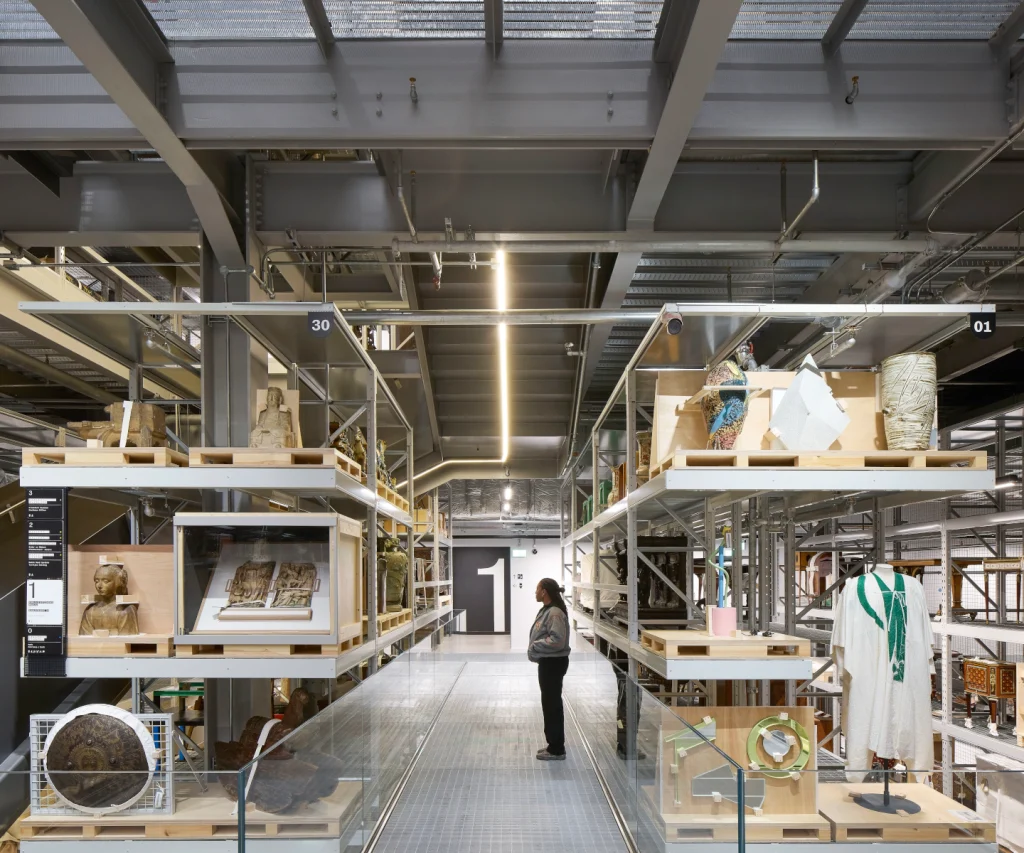
The Storehouse, which opened in May, is already exceeding its visitor expectations of 1,000 a day (still vastly fewer than the South Kensington museum, which processes 100,000 in a busy week). Book your own close encounter now. ’
